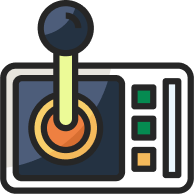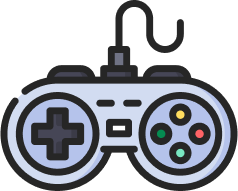PSP, also known as PlayStation Portable, is a series of seventh-generation handheld gaming consoles developed by Sony Computer Entertainment. It was first introduced in Japan back in December 2004. PlayStation Portable game consoles continued till 2014 when Sony eventually discontinued them.
The PSP consoles are the only one of its kind that uses optical media as its primary medium of storage: UMD (Universal Media Disc). These consoles were not just ordinary gaming consoles as they provided a lot more functionality than just regular gaming.
PlayStation Portable lineup is a classic example of a portable multimedia device that, apart from console gaming, also gave users the ability of video and audio playback as well as the capability to store pictures. Moreover, users also had the ability to surf the internet and read books/comics offline! Since these features were not expected from a regular handheld gaming console, therefore, PSP consoles took the market by storm!
As you may have already figured out, when Sony launched its first-ever PlayStation Portable console in 2004, it was a commercial success. At the time, Nintendo’s handheld gaming consoles had been taking the lion’s share of the market. Consequently, PSP-1000 gave a tough time to Nintendo’s Nintendo DS as it outperformed its rival in many aspects.
During its decade-long journey, Sony made several hardware revisions to the PlayStation Portable handheld gaming console. Do you know how many PSP consoles are there? In the span of 10 years, there were a total of 4 hardware revisions of the original PSP console, also known as the PSP-1000.
Here is the list of the hardware models:
- PSP 1000
- PSP 2000
- PSP 3000
- PSP GO (PSP-N1000)
- PSP Street (PSP-E1000)
Now let us look at each hardware model in some detail.
PSP Hardware Models
1) PSP-1000

This is the very first PlayStation Portable console that brought about a revolutionary change in handheld console gaming. As mentioned earlier, Sony launched PSP-1000 in December 2004. The console was launched with the 1.00 version of its operating system.
The original PlayStation Portable featured 32 MB RAM and uses two 333 MHz MIPS32 R4000 R4k-based CPUs. The gaming console also featured a 166 MHz GPU and a 4 MB DRAM. In addition to this, PSP-1000 incorporates 32 MB of internal storage that is exclusively reserved for the system’s operating system.
Though the handheld gaming console CPUs clocked at 333 MHz frequency, PSP was originally made to run games at 222 MHz frequency. It was not until 3 years later that via a firmware update of 3.50, all of the games could run on 333 MHz frequency.
Besides this, PSP-1000 incorporates a 4.3-inches 24-bit TFT LCD screen that is capable of delivering 480 x 272 display resolution. In terms of battery, PSP-1000 features an 1800 mAh battery that provides up to 6 hours of gaming, 5 hours of video playback, and 11 hours of audio playback.
The model measures 6.7-inches (width) by 2.9-inches (height) by 0.9-inches (depth) and weighs about 9.9 ounces. Apart from these, PSP-1000 also has a USB 2.0 mini-B port, wireless LAN connectivity, IrDA compatible infrared port, stereo speakers, a headphone port, a memory stick pro duo flash stick accessibility, and Wi-Fi connectivity.
2) PSP 2000

PSP-2000, also known as PSP Slim, is the first hardware revision of the PlayStation Portable console that Sony made in August 2007. PSP-2000 was launched with the 3.60 version of its operating system.
As such, PSP-2000 effectively addressed several issues that came from the public community regarding the first model, PSP-1000. In addition to this, PSP-2000 also brought several new upgrades.
The most notable feature is its same but all-new design. It is 33% lighter and 19% slimmer than the original model. It measures 2.8-inches (height) by 6.7-inches (width) by 0.75-inches (depth) and weighs about 6.7 ounces.
Due to its slimmer design, the battery size was inevitably reduced. The new battery size stands at 1200 mAh instead of the previous 1800 mAh. However, this does not decrease the playing time on the handheld gaming console. Thanks to efficient power consumption, the playing time remains constant despite the decrease in battery size.
Moreover, PSP-2000 also features an all-new video-out capability that is not available on the PSP-1000 model. With the video-out capability, players can now enjoy their games on wide-screen progressive scan-enabled televisions.
In addition to this, for the first time ever, Sony enabled USB charging functionality on its revised handheld gaming console. The IrDA-compatible infrared port, however, was removed.
Furthermore, the directional pad on the left side of the console was raised in response to complaints regarding poor performance and the display LCD screen was further made brighter. However, the display screen is still the same 4.3 inches 24-bit TFT LCD screen that is capable of delivering 480 x 272 display resolution.
Regarding processors, the console incorporates the same two 333 MHz MIPS32 R4000 R4k-based CPUs and a 166 MHz GPU. Sony doubled the internal storage size capacity to 64 MB which is exclusively reserved for the operating system.
In order to improve the gaming experience, the RAM size was also doubled to 64 MB. Consequently, the games now loaded much faster and, thanks to the increased RAM size, even the browsing experience was smoothened. Part of the RAM now acted as a cache and helped in loading webpages more quickly.
3) PSP 3000

Roughly a year later, Sony made another revision of its PSP handheld gaming console: PSP-3000. This gaming console is also known as “PSP Slim & Lite” or “PSP Brite”. PSP-3000 was launched with the 4.20 version of its operating system.
Though often termed as a “minor upgrade”, PSP-3000 was way more than a minor upgrade!
For the first time ever, Sony added microphone functionality to its PSP consoles. It may seem like a small improvement but its everyday use cases are tremendous where having a microphone is the most important requirement. For instance, Skype telephone calls became a possibility thanks to the microphone.
Moreover, Sony also tremendously improves its PSP screen display. The 4.3 inches 24-bit TFT LCD screen now boasts a five-times more contrast ratio that significantly improved the screen output and further enriched the colors. The pixel response time was halved which helped in reducing the blurring and ghosting effects. An all-new sub-pixel feature was introduced in the PSP-3000 model.
Sony also took outdoor gaming into consideration while improving its display screen. As a result, an anti-reflective technology was developed for PSP screens which helped in playing games on the handheld game console outdoors.
Apart from these upgrades, the disc tray, logos, and console buttons all underwent redesigning and were made better look than before. Other than these upgrades, PSP-3000 is the same as PSP-2000.
It features the same 64 MB RAM, two 333 MHz MIPS32 R4000 R4k-based CPUs, a 166 MHz GPU processor, a 1200 mAh battery, and 64 MB internal storage which is exclusively reserved for the system’s operating software.
Even the hardware dimensions and body weight are the same: 2.8-inches (height) by 6.7-inches (width) by 0.75-inches (depth), and weighs about 6.7 ounces.
4) PSP GO (PSP-N1000)

PSP Go, also known as PSP-N1000, is an all-new redesigned PSP console that Sony released a year later in October 2009. It was launched with the 5.70 version of its operating system. PSP Go introduced many new features but also removed many others.
The typical hardware layout was changed. Instead of the traditional buttons on either side of the LCD screen, the buttons were now revealed when users slide up the LCD screen. Moreover, PSP Go features a rechargeable non-removable battery. This is in stark contrast to the tradition where all of the previous PSP console models featured a removable battery.
PSP-N1000 is even further 16% lighter and 35% slimmer than the PSP-3000 model. Instead of the 4.3 inches display screen, the handheld game console now features a smaller 3.8 inches 24-bit TFT LCD screen capable of delivering 480 x 272 display resolution.
Further, PSP Go also lacks a UMD disc drive option. Users can no longer run UMD games on their PSP Go console. Instead, users have to download the game from the PlayStation Store via a Wi-Fi connection.
There is no need to worry though. Sony made it clear that all of the games released on UMD for PSP consoles will be available on PlayStation Store for users to download. Moreover, most of the UMD games released before the PSP GO would also be made available on the PlayStation Store.
On the plus side, PSP-N1000 introduces a Bluetooth connectivity feature that is not available in any of the previous console models. A major advantage is that you can now also play games on your PSP Go console via PS3 Controllers. Both Sixaxis and DualShock 3 are supported.
Moreover, unlike the mere 32MB/64MB internal memory featured on earlier models, PSP Go stands out with its 16 GB shared Flash memory capability. Users can download and store games on their consoles without the need of carrying games with them.
In addition to this, unlike before when there was a separate port for each connection, PSP Go features a single but multi-use proprietary connector that comes with a compatible cable.
In terms of processors, everything is the same as before. PSP Go features 64 MB RAM, two 333 MHz MIPS32 R4000 R4k-based CPUs, a 166 MHz GPU processor, and a 1200 mAh battery.
PSP Go measures 2.7-inches (height) by 5.0-inches (width) by 0.65-inches (depth) and weighs around 5.6 ounces.
5) PSP Street (PSP-E1000)

PSP Street, also known as PSP-E1000, is the latest hardware revision and the last of the consoles in the PSP lineup. Sony introduced PSP Street in October 2011 as a budget-focused handheld gaming console. It was launched with the 6.50 version of its operating system.
PSP Street is a rather bulky hardware console that matches best with the original PSP-1000 model that Sony introduced back in 2004. Power buttons and the memory card slot have been shifted around. The physical screen adjustment buttons are also gone and are now located in the setting’s Power Save option.
Sony removed several notable features in this model. There is no Wi-Fi connectivity so you can forget about downloading games, chatting over Skype, or even Web Browsing.
Another noticeable cutting-cost effect is the absence of stereo speakers. PSP Street supports a singular mono speaker that reduces the dynamic experience of gaming on previous PSP handheld game console models.
Moreover, PSP Street features a 4.3 inches 24-bit TFT LCD screen capable of delivering 480 x 272 display resolution. The handheld console measures 2.9-inches (height) x 6.8-inches (width) x 0.85-inches (depth) and weighs around 7.9 ounces.
Unlike PSP Go, PSP Street brings back the support for UMG Games, and instead of the 16 GB flash memory, the Street model has gone back to the traditional 64 MB of internal storage that is reserved for the system’s operating software.
The processor specifications are the same as before. PSP Street features 64 MB RAM, two 333 MHz MIPS32 R4000 R4k-based CPUs, a 166 MHz GPU processor, and a 1200 mAh battery.
The Software running the PSP Consoles
As we have seen, over the course of 10 years, Sony made several hardware revisions to the PlayStation Portable console. Each PSP console was technically superior to its elder sibling in one way or the other, except for the budget-focused PSP-Street model. Moreover, all of the PSP hardware models ran the same basic PlayStation Portable System Software.
Newer technical upgrades and regular system software updates resulted in newer features being continuously made available on these consoles. However, due to the hardware limitations of some PlayStation Portable consoles, not all of these features were available on all the consoles.
Let us look at some of the key software features that these consoles provided or were later provided via software updates.
- Web Browser
The original PSP Console, PSP-1000 came with version 1.00 of the PlayStation Portable System Software. Web browsing was not possible until the system software update of version 2.00. Any PSP console running OS version 2.00 or higher has web browser functionality.
Essentially, the web browser of the PSP console is a version of the NetFront browser that supports HTTPS cookies, forms, CSS, as well as basic JavaScript. Moreover, users can have a maximum of 3 tabs on their PSP console browser at any given time.
- Remote Play
Sony’s PlayStation Portable consoles support Remote Play. Remote Play is a feature that let users control many of their PS3 functionalities on their PSP consoles.
For instance, using the WLAN capabilities of the PS3, users can view pictures, listen to music/audio, and watch videos and movies stored on their PS3 or connected USB devices right on their handheld game consoles. Moreover, Remote Play also enables users to remotely turn on and off their PS3 consoles.
- VoIP Access
Thanks to the microphone functionality and the system software 3.90 update, Sony enabled PSP-3000 and PSP-Go to use the Skype VoIP service. This service allowed Skype calls to be made by users who first purchased Skype credits to make telephone calls.
Any PSP-3000 and PSP-Go having the system software version 3.90 or higher can use this VoIP service. However, due to the hardware limitations of PSP-1000, PSP-2000, and PSP-Street, users cannot use this service.
- SensMe Application
A system software update in 2009 equipped Sony’s handheld gaming consoles with the SensMe Application. SensMe Application is basically a music app that automatically categorizes the music/audio files stored on a user’s PSP console into different lists representing different moods, such as Party or Sad, and creates automatic playlists from it.
- Digital Comics Reader
Any PSP console running system software 6.20 version or higher is capable of using a digital comics reader application. Users can read various comics by downloading them from the PlayStation Store. Sony partnered with several publishers such as Marvel Comics, Disney, Titan Books, Bandai Visual, Futabasha, Hakusensha, as well as Kadokawa.
- X-Radar Portable
This feature is exclusive to Japanese PSPs and it arrived with the system software update 6.35. Any Japanese PSP running a 6.35 version or higher has this functionality.
X-Radar Portable is a port of map software for PCs and mobile phones called X-Rader that gets the location of the PSP on a map using the “PlaceEngine technology” and obtains information about places around the user.
PSP Console Games
The decade-long journey of the PSP console lineup saw several hundred games made for it. As of now, there have been a total of 1,370 games for the PlayStation Portable consoles.
The best-selling game on the PSP consoles has been Grand Theft Auto: Liberty Stories which sold around 7.6 million copies as of October 2015.
Retro Gaming Rampage DX is the last game that was released for the PlayStation Portable handheld gaming consoles in 2016.
As per Metacritic, the top 3 best-rated PSP games are God of War: Ghost of Sparta, Grand Theft Auto: Vice City Stories, and Daxter.
Due to the vast array of functionalities provided by the PSP consoles and a large library of 1000+ unique games for the console lineup, PlayStation Portable consoles were immensely popular and well-received by the users.
As of today, Sony has sold over 80 million units. These iconic handheld consoles are now considered retro. However, you won’t regret getting your hands on a functioning console in a good condition. PSP consoles are rare today but they still deliver a one-of-a-kind handheld console gaming experience to their users!
The PSP lineup has been succeeded by PS Vita.







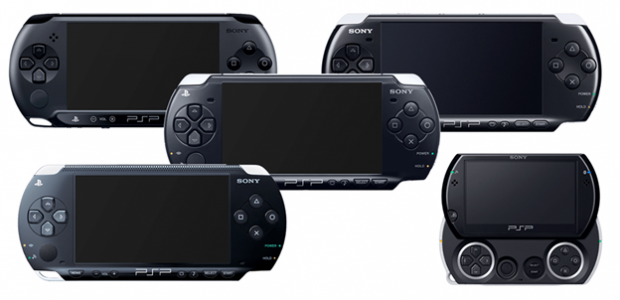





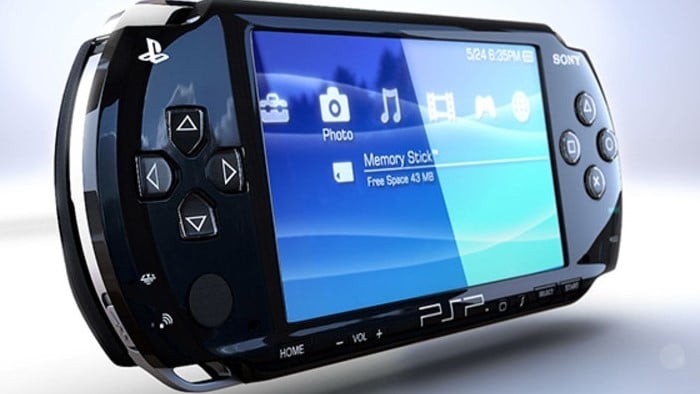
.jpeg)

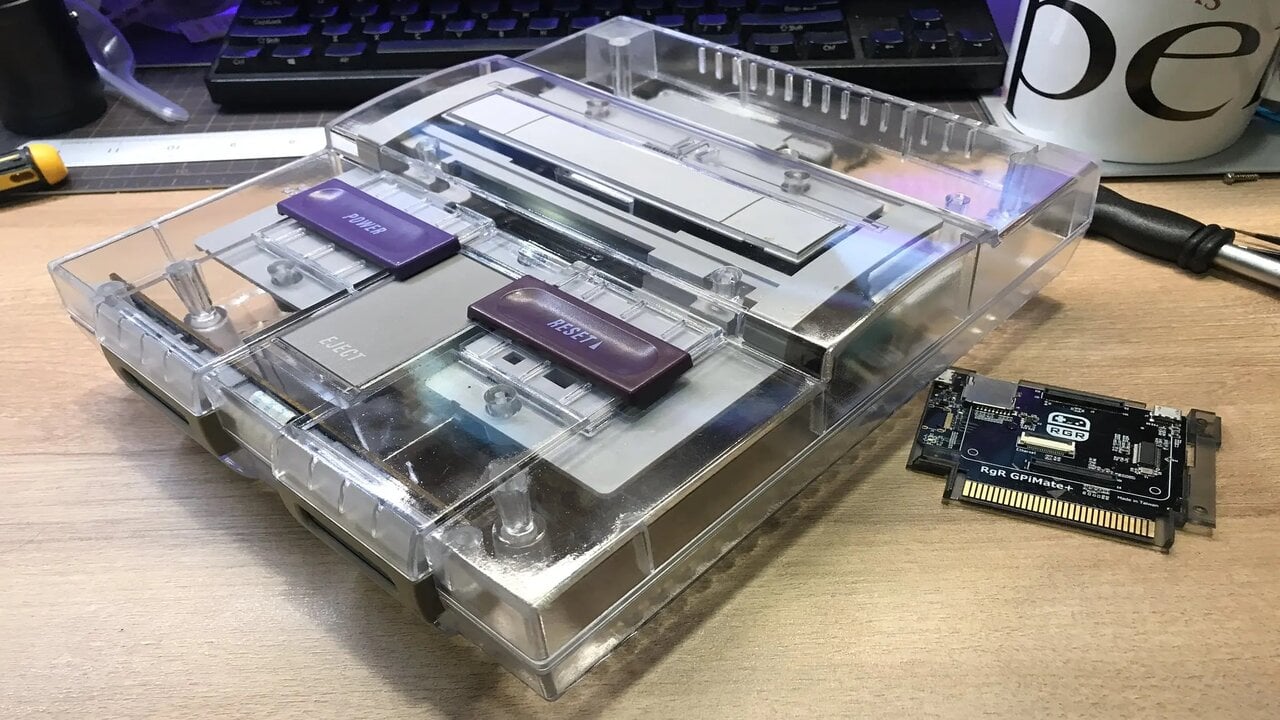

 (1).jpg)
.jpg)
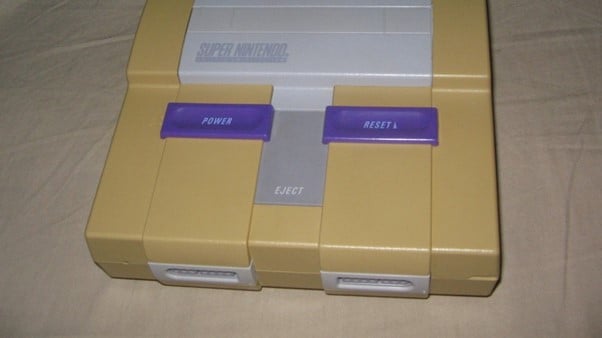


.jpg)

